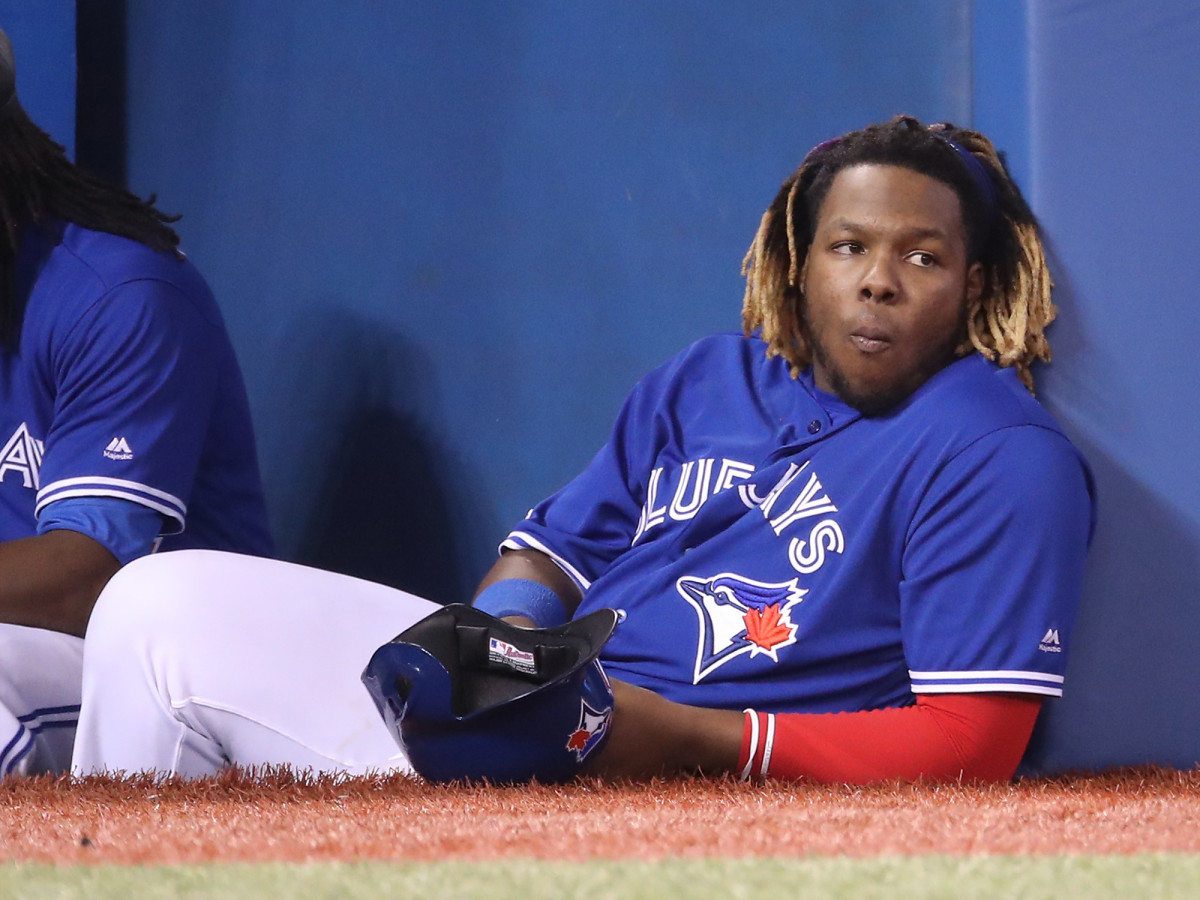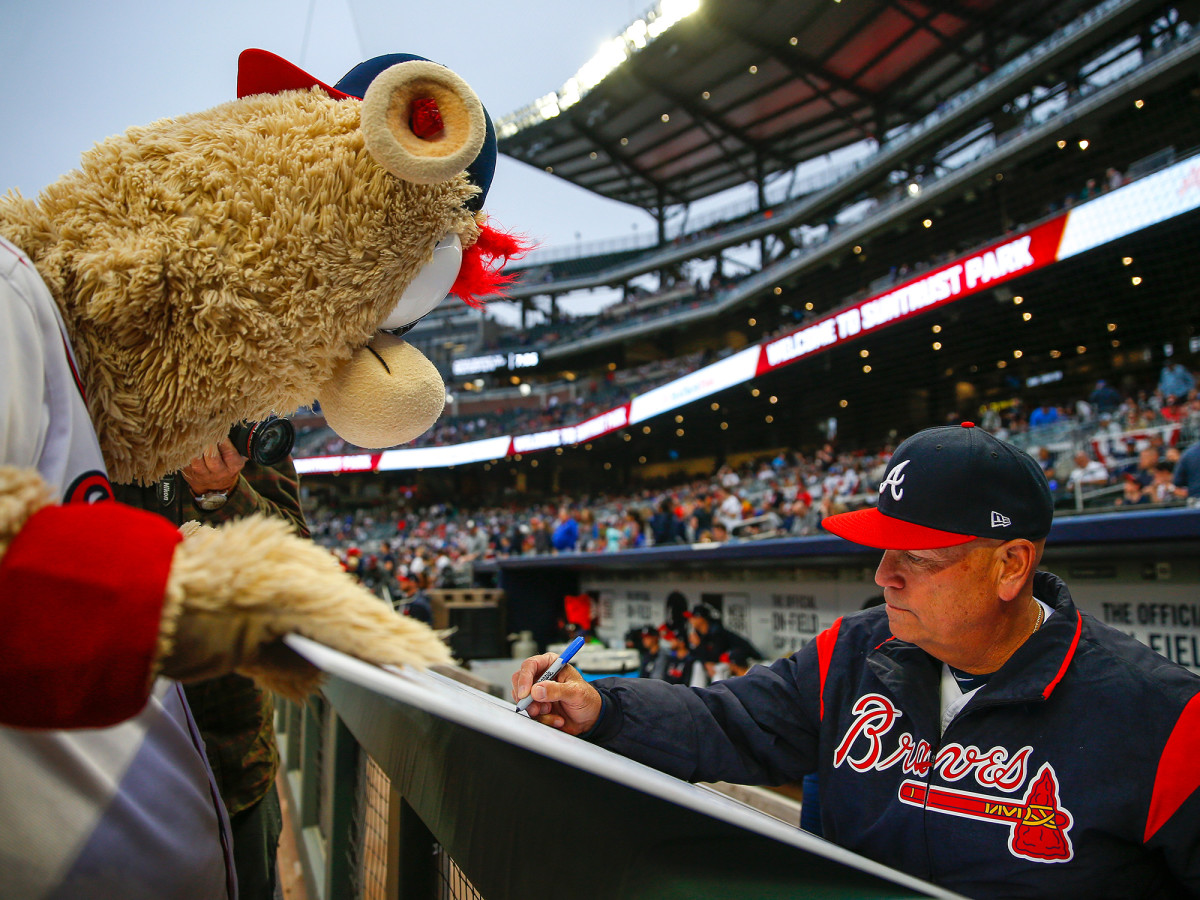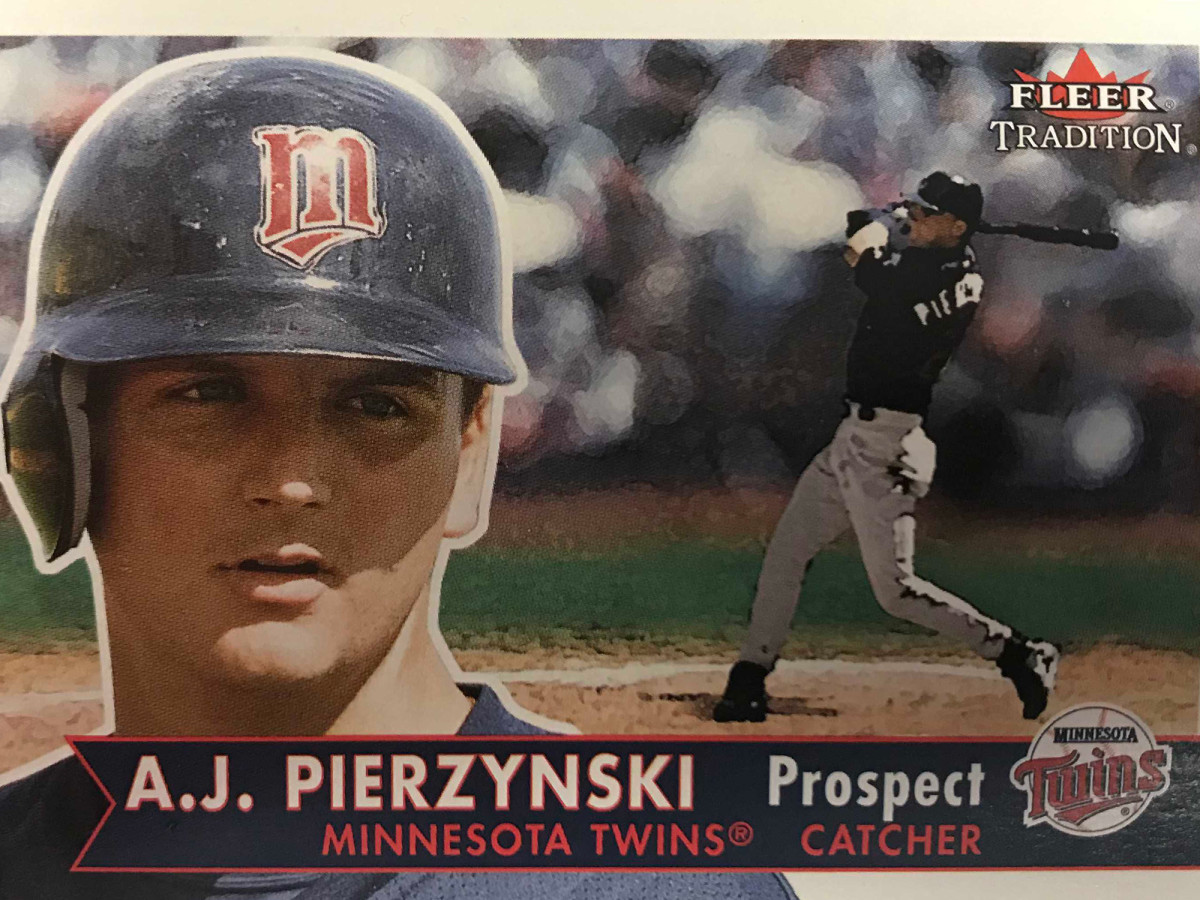MLB Could Use More of the Twitter Beef We Saw Between Alex Bregman and Trevor Bauer

Welcome back to Nine Innings, SI's weekly look at what’s fun, cool, and somewhat stupid around the league. Today’s topics include: why baseball needs more smoke; the stupidest argument over the unwritten rules yet; the fate of baseball in the Marvel Cinematic Universe; and more. If you have any feedback, questions or angry rants to send my way, please don’t hesitate to hit me up via email (jon.tayler@simail.com) or Twitter.
This Week In … Baseball Beef!
Trevor Bauer and Alex Bregman don’t like each other. That’s been the case since last year, when Bauer accused the Astros of messing with the ball to increase their spin rates (which is exactly how you’d expect a Bauer-involved feud to start) and Bregman fired back by calling him “Tyler” on Twitter. It kept going during the playoffs, when Bregman homered off Bauer amid a Houston ALDS sweep of Cleveland, and in the offseason, when Bauer challenged Bregman to try to homer off him at Driveline. (“I’ll save them for the postseason,” he replied.)
Last Friday, a new chapter was written when, after beating the Astros, Bauer tweeted this:
👋🏻👋🏻 @ABREG_1 #TakeItBack #RallyTogether @astros @Indians @MLBNetwork @IntentionalTalk @barstoolsports @Starting9 pic.twitter.com/koQV8vD5ph
— Trevor Bauer (トレバー・バウアー) (@BauerOutage) April 27, 2019
When asked about it, Bregman was less than impressed.
Alex Bregman responds to @BauerOutage Tweet from last night pic.twitter.com/UpHW8Oh2Hv
— Brian McTaggart (@brianmctaggart) April 27, 2019
Point Bregman here: Bauer didn’t really dominate, given that he walked six guys in the outing (though that video is pretty funny). But the key takeaway here is the feud—a real-life bit of actual animosity and bad blood between players. And baseball could use more of it.
This kind of quarreling is common in the NBA, where trash talking rules the day and where players routinely put each other on blast via social media (and whose players are way more adept with Twitter and Instagram, too). It’s part of what makes that league so amusing and appealing, not to mention popular: The stars have personalities, and they’re not afraid to show them.
MLB doesn’t have that same air, given its more buttoned-up culture. But I wish the sport would have more of it—more stuff like Bauer and Bregman taking shots at each other. Pettiness—true, bone-deep pettiness, born out of grudges both personal and professional—makes for real entertainment and spices up a game that sometimes feels like the lights have been turned down. Don’t get me wrong: The on-field stuff is still the most compelling thing about baseball, and it’s plenty worth the price of admission. But there’s something to be said about the drama of the NBA and its ecosystem of slights, fights and insults, and what it brings to the table.
So let’s follow the example of Bauer and Bregman. Here’s to more Twitter beef, Instagram sniping and post-game banter, or at least these two keeping the heat high.
This Week In … The Unwritten Rules!
The Bauer-Bregman contretemps is way more entertaining than the latest stupid squabble involving etiquette. Last week, the Mets battled the Phillies in a series that grew and stayed heated, thanks in large part to New York’s Jacob Rhame going up and in on Rhys Hoskins. Philadelphia’s slugger got the best of that matchup, though: After getting dusted on Tuesday, Hoskins took Rhame miles deep on Wednesday, then practically walked around the bases.
Rhys Hoskins taunts the #Mets after being thrown at.
— Chris Dixon (@cdixon25) April 25, 2019
Slow jog around the bases and a sideways hop across the plate. pic.twitter.com/uxANUObTz9
This pettiness I applaud, but apparently, much sillier stuff was behind all the anger. Per The Athletic’s Tim Britton and Matt Gelb, the two teams were pissed at each other over the feeling among each side that the other was trying to pick up extra bases instead of going station to station in Tuesday’s blowout. Seriously.
Before that, the Phillies saw a breach of basic baseball etiquette, a player running despite an eight-run lead in the later innings.
The Mets, on the other hand, viewed [J.T.] Realmuto as the real transgressor. Asked about [Juan] Lagares’ decision to run before Wednesday’s series finale, several players and coaches pointed out what had happened in the top of the sixth.
“They did it first,” one member of the Mets said. “They broke the unwritten rule.”
“If you’re still playing, we’re still playing,” said another.
I couldn’t imagine a better distillation of how ridiculous the unwritten rules are than this: Two teams literally mad at each other over who was supposed to stop trying first.
As much as baseball needs some energy and flavor in its interpersonal battles, it also needs way less of this absurd Emily Post debate over who gets to do what and when and how and why and where and all of it. It’s dumb. It’s so dumb that it gives me a headache. Please stop worrying about this dumb stuff and just have fun playing the game. Why is that so hard?

This Week In … Vladimir Guerrero Jr.!
For the last two weeks, I’ve harped about the absence of Vlad Jr., the super-prospect who was stomping all over the minor leagues. Luckily, the wait was short: Last Friday, Guerrero finally got the call and made his major league debut—an outcome that I’m going to take full credit for, since I’m the only person in America who was pushing for it to happen.
Well, Vlad is here now, doing what he does best: ripping line drives all over the place. Over his first three games with the Jays, Guerrero has already hit four balls at 100 mph or higher, and his first hit—a double that he scalded down the rightfield line—started a game-winning rally on Friday. He also made a few nice plays at third base; I guess all those [checks notes] eight games in Triple A really did let him work on his defense. He even showed up at a Raptors playoff game, achieving Peak Toronto Sports Synchronicity in record time (but not, as it turns out, quickly enough to lend his aura to the Leafs).
Anyway, with Vlad Jr. hopefully up for good, this space will now pivot toward being a regular highlight section for The Prospect That Was Promised. Now, let’s just hope that, since coming to the majors, he hasn’t been consumed by a demonic force that cripples the athletes and teams it supports and jinxes them at every turn.
Dammit.
This Week In … Fictional Apocalyptic Baseball!
WARNING: The following section contains an extremely minor spoiler for Avengers: Endgame. If you haven’t seen it and want to go in totally blind, like a newborn deer wobbling about on its legs, feel free to skip ahead.
Avengers: Endgame is finally out, and the super-sized finale to the current Marvel Cinematic Universe leaves viewers with a lot to ponder over its bladder-straining runtime, including how exactly [redacted] works, the arc and ultimate fate of [redacted], and why [redacted] killed [redacted] with a candlestick in the conservatory. But for me, the biggest question Endgame raised is: What happened to baseball?
The second trailer for the movie, released in January, showed an overhead shot of a gray and empty Citi Field, though it was impossible to tell if that was the stadium post-Thanos snap or during a September game against the Marlins. Did it mean that the Mad Titan (or, uh, Eric Thames) had raptured the Mets? Apparently so: Early in the film, a minor character mentions how much he misses watching them play.
Leaving aside that most Mets fans would probably be thrilled if the team vanished (and the incredibly accurate reflection that said fans would then be pissed not to have something to hate any more), I have a lot of questions about the logistics of this. Given that Thanos’ plan was to wipe out half of all life in the universe, does that mean that all the Mets were unlucky enough to be part of that disappeared 50%? (The answer to that is yes, because it’s the Mets.) If not, which players survived? Is it weird that I’d pay a lot of money to hear the SNY call of this happening (including the Keith Hernandez groan to end all groans)? Would it be possible to get Statcast data on the snap? “Robinson Cano’s body had an average exit velocity of just 25.2 mph, but the dust had an elite spin rate.” Did other teams escape unharmed? Assuming Rob Manfred wasn’t snapped out of existence, did he celebrate upon realizing that pace of play was definitely going to speed up? Is it safe to assume that Mike Trout wasn’t affected because he’s a god?
Unless Phase 4 includes a detailed take on all of this, the answers remain unknown. But based on that character’s remark, it’s a good bet that MLB—along with probably all the other major sports—more or less went out of business after the snap, which makes sense. It’s hard enough to field a functional team with a full cosmos, much less one in which Jacob deGrom is floating away on the breeze. On the other hand, it’s easy to imagine the owners still left insisting that baseball play on; after all, the game just got way cheaper.
This Week In … Pitchers Who Don’t Rake!
Among pitchers, there’s a small subset that can actually hit. The great majority of them are feeble but semi-functional with the bat. And then there are a chosen few who are absolutely useless with the lumber and would be better off standing at the plate without anything in hand. Yankees lefty James Paxton is definitely in that last group.
James Paxton, BP.
— Rob Friedman (@PitchingNinja) April 27, 2019
Chicks dig the.....whiff. pic.twitter.com/aXeI66frDq
Folks, that is the face of a man who doesn’t know how what he’s doing. Not that there’s any reason Paxton should: He barely hit in high school and didn’t in college, and he has all of 13 plate appearances across seven years in the AL. More important, though, is Paxton’s look of pure revulsion. That expression after that swing and miss is some huge “I have to take my dog out in a blizzard” energy: someone who just wants to get this awful task done and then go back to never doing it again.
But hey, even if Paxton hates his job, at least someone got some enjoyment out of it.
Marcus Thames loved what he saw when Paxton took BP pic.twitter.com/dljxDD8LD5
— Jomboy (@Jomboy_) April 27, 2019
This Week In … Who Needs Craig Kimbrel?
Every week until he’s signed, I’ll take a look at which teams need free agent Craig Kimbrel, one of the best relievers in baseball, the most, and declare one the “winner.”
How do you define which team needs Craig Kimbrel the most? Is it the one with the worst bullpen, or the one that most desperately needs a closer, or the one for whom he provides the greatest marginal advantage? That conundrum isn’t helped by the sheer number of teams who still need relief help as May approaches, ranging from “stable but could use a boost” (Brewers, Cubs, Phillies) to “wouldn’t hurt but we have a lot of other problems” (Red Sox, Mets, Mariners) to “fire, fire everywhere, oh God it burns” (Braves, Nationals).
Kimbrel belongs many places, but it’s hard to nail down where. Honestly, these teams should just pool their money and all employ him at once. He’d go to a new roster every week, collecting saves and also solving crimes, or maybe teaching important life lessons about hard work. But with closer-by-ride share not allowed, a task that looks simple on the surface has hidden depths: How do you determine both the best and most logical fit?

Right now, that’s Atlanta, which is the neat overlap in the Venn diagram of “Can’t trust its closer” and “Has an awful bullpen.” Arodys Vizcaino is done for the year; his would-be replacement in the ninth, A.J. Minter, has an ERA of 9.35 and six walks in 8 2/3 innings. The rest of the relief corps lacks experience and/or skill. This is such a toxic mess that Kimbrel alone won’t fix it. But even if he can’t, he’s a step in the right direction. Sometimes all you can do is make that first move, even if it isn’t perfect.
Also receiving votes: Mets, Nationals, Phillies, Cubs, Red Sox, Mariners, Brewers, Dodgers, Twins, pretty much everyone besides the Orioles and Marlins
This Week In … Joey Votto Is Just The Best!
I have a big soft spot for Joey Votto, Reds first baseman, affable Canadian, and all-around weirdo goof. He refuses to take the game too seriously, and he’s also eccentric in a delightful way. Take, for example, this moment in Monday’s Mets-Reds game, where after Amir Garrett gets a putout to end an inning, Votto decides to race his pitcher back to the dugout.
Next time let's see who wins with a fair start, fellas 😂#BornToBaseball | @Amir_Garrett | #TwitterlessVotto pic.twitter.com/PiSpKmopCg
— Bally Sports Cincinnati (@BallySportsCIN) April 30, 2019
Why do that? Well, why not? And that’s what’s great about Votto.
This Week In … Good Reads Around the Web!
“The Bob Emergency: A Study of Athletes Named Bob, Part I” | Jon Bois, SB Nation
This one isn’t an article, but a 42-minute video cooked up by SB Nation’s resident mad scientist about the decline of Bobs across sports, and it features a truly terrific bit on arguably the greatest Bob ever: Gibson. As with all things Bois, it’s worth your time.
“John Sterling’s home run calls tested by Yankees’ injury horror” | Mike Vaccaro, The New York Post
A fun idea given how many players New York has had to cycle through: the travails of Sterling, the team’s longtime radio announcer who has personalized calls for every Yankees home run and is being tested to come up with new ones like never before.
“Greatest catch ever? Re-creating Kevin Mitchell’s epic bare-handed grab” | Sam Miller, ESPN
In which science (sort of) is used to determine whether this absurd Mitchell catch truly is the best ever.

This Week In ... Old Baseball Cards!
Each week, I’ll pluck a random baseball card out of a pile of 1980s, 90s and 2000s cards I have at my desk, then write a quick little take on the player in question. This week’s entry: A.J. Pierzynski, catcher, Minnesota Twins (Fleer 2001).
Oddly for a baseball card, the back of Pierzynski’s has no blurb. There’s no 15-word scribble about his season, his background, or anything else noteworthy about the Twins’ rookie backstop. All you get are some biographical stats and a sparse set of numbers. Pierzynski’s story has literally yet to be written.
That makes sense, because at the time, there wasn’t much to his tale. Beyond those at-bats and hit totals, Pierzynski was a third-round pick out of an Orlando high school and chose MLB over the University of Tennessee. He toiled in the minors and spent the first few years of his major league career as a backup before becoming Minnesota’s starter the season this card came out. Maybe there was some anodyne personal detail the folks at Fleer could’ve ginned up to give this card something extra (“A.J. likes dogs”), but ultimately, they didn’t have much to work with. Pierzynski was just a prospect and nothing more.
His career would ultimately provide enough material to fill a hundred cards: traded for Francisco Liriano and Joe Nathan; two-time All-Star and World Series champion; one of the most disliked players in baseball; recipient of a perfect right hook from Cubs catcher Michael Barrett; bleached-blond hair enthusiast. Pierzynski’s 19 years in the bigs would, like him, contain multitudes. But before all of that, he was just a 24-year-old kid with a big empty road in front of him.
